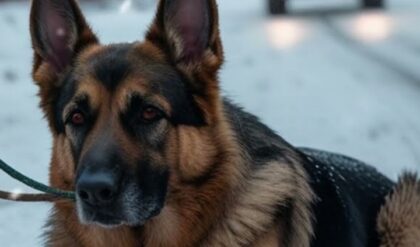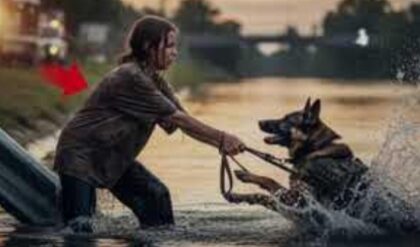
The Corsair Proved That Early Technical Setbacks Can Be Overcome
On 13 February 1943, the Vought F4U Corsair flew its first operational mission when Guadalcanal-based Marine Fighter Squadron ONE TWO FOUR (VMF-124) F4U-1 Corsairs escorted U. S. Army Air Corps B-24 Liberator bombers on a raid against Kahili Airfield on Bougainville. They encountered no enemy aircraft on the mission. This mission was the culmination of years of design and development work on what is perhaps the easiest of all World War II aircraft to recognize due to its unique wing design.

Fast Right Out of the Box
In June of 1938, the United States Navy signed a contract with Vought for a prototype bearing the factory designation V-166B, the XF4U-1, bureau number 1443. The F4U was the first airframe ever designed from the outset to mount the R-2800 Double Wasp engine. When the prototype was completed it had the biggest and most powerful engine, the largest three-blade propeller, and the largest wing on any naval fighter up to that point. The XF4U-1 first flew on 29 May 1940. On 1 October 1940, the XF4U-1 became the first single-engine United States fighter to fly faster than 400 miles per hour (640 kilometers per hour).
How Those Famous Wings Got Bent
The first production F4U-1 took to the air on 24 June 1942. From the outset the F4U featured the largest and most powerful radial engine available- the 2,000 horsepower, 18-cylinder Pratt & Whitney R-2800 Double Wasp. The F4U’s propeller was the Hamilton Standard Hydromatic three-blade propeller, measuring 13 feet 4 inches (4.06 meters). In order to accommodate the required folding wing and the size of the chosen propeller, Vought’s solution was an inverted gull wing, which considerably shortened the required length of the main gear legs.

How and Why the Corsair Was So Fast
The Corsair’s aerodynamics were an advance over those of contemporary naval fighters such as the F4F Wildcat. The F4U was the first U.S. Navy aircraft to feature landing gear that retracted into a fully enclosed wheel well. The oil coolers were mounted in the center-section of the wings, alongside the supercharger air intakes, and used openings in the leading edges of the wings, rather than protruding scoops. Fuselage panels were made of aluminum and were spot-welded to the fuselage frames instead of riveted to them. But the Corsair’s outer wing panels and control surfaces were fabric-covered.

Bouncing Aboard Blind
There were some problems encountered during early Navy carrier suitability trials on the escort carrier USS Sangamon (CVE-26) on 25 September 1942. The combination of an aft cockpit and the Corsair’s long nose made landings hazardous for newly-trained pilots. The major hurdle was that the landing gear struts tended to allow the aircraft to bounce too high on landing. Eventually a bleed valve built into the landing gear legs eased the hydraulic pressure as the aircraft recovered aboard the carrier.

Flying Leathernecks and the Fleet Air Arm First
The Grumman F6F Hellcat was simpler to build and was suitable for carrier operations “out of the box” once introduced. Because of this, and because the Leathernecks desperately needed fighter aircraft in the Solomons, the Navy chose to release the Corsair initially to the U.S. Marine Corps. The Marines had to have better fighter aircraft than the F3F Buffalo and F4F Wildcat. The type was declared “ready for combat” at the end of 1942, though only qualified to operate from land bases until carrier suitability issues were worked out. Only after the landing gear problems were solved was the Corsair deployed regularly aboard US Navy aircraft carriers.
Speed When and Where You Can Use It
Whatever its issues with carrier suitability, the F4U-1 was considerably faster than the Grumman F6F Hellcat and only 13 miles per hour (21 kilometers per hour) slower than the Republic P-47 Thunderbolt. All three aircraft were powered by the same R-2800 radial engine. However, the P-47’s highest speed was reached at 30,020 feet (9,150 meters) and with the help of an intercooled turbocharger. The F4U-1 reached its maximum speed at only 19,900 feet (6,100 meters) using a single mechanically supercharged engine.
Twelve Marine Corps F4U-1s of VMF-124, commanded by Major William E. Gise, arrived at Henderson Field on Guadalcanal on 12 February 1943. These were the early “birdcage” version of the Corsair. Their first mission, an escort of Army Air Corps B-24s to Kahili, resulted in no sightings of enemy aircraft. However, their next mission on the 14th saw the first combat engagement of the F4U. The Corsairs went back to Kahili escorting the B-24s again, along with Army Air Corps P-40s and P-38s. Japanese fighters shot down two P-40s, four P-38s, two F4Us, and two Liberators. The American fliers claimed only four of the Japanese fighters. This engagement, often referred to as the “Saint Valentine’s Day Massacre,” did not define the Corsair. The Marines learned quickly how to fight with the Corsair. VMF-124 produced the first Corsair ace, Second Lieutenant Kenneth A. Walsh, who would end the war with 21 kills.
Baa Baa Black Sheep
Probably the most famous Marine squadron flying the Corsair was the “Black Sheep.” Led by Marine Major Gregory “Pappy” Boyington, VMF-214 started flying their missions in September of 1943 and racked up 97 confirmed aerial victories in only 84 days. Boyington was eventually credited with 22 kills in F4Us before he was shot down himself and made a prisoner of war in January of 1944. Other notable Corsair aces included the aforementioned Kenneth Walsh, James E. Swett, and Archie Donahue (also of VMF-124), VMF-215’s Robert M. Hanson and Donald Aldrich, and VF-17’s Tommy Blackburn, Roger Hedrick, and Ira Kepford.





